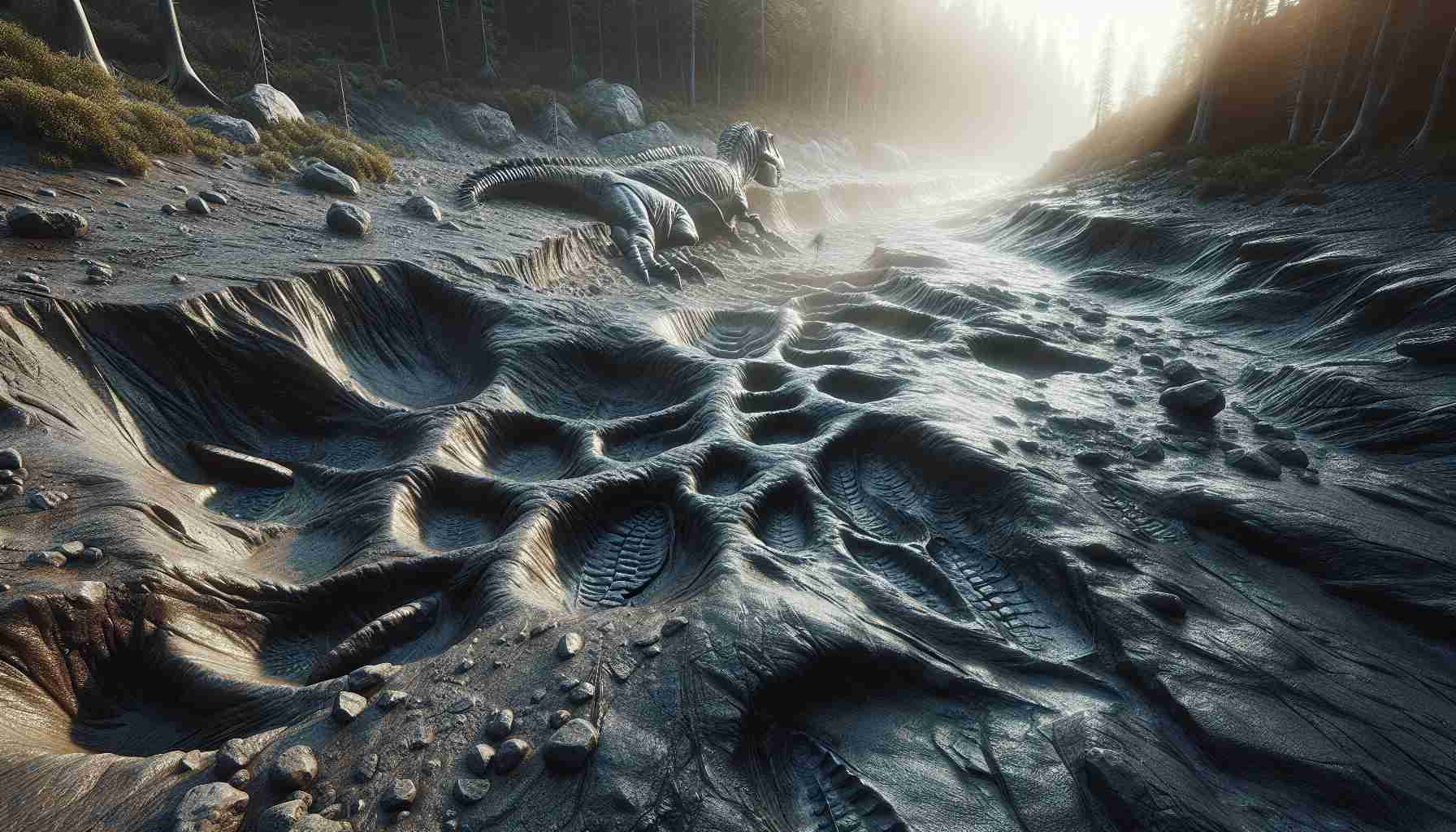Exciting Discovery in Oxfordshire
In a remarkable find, a team of over 100 researchers from the Universities of Birmingham and Oxford has unearthed about 200 dinosaur footprints in southeast England. This discovery occurred during a week-long excavation in June 2024 at Dewars Farm Quarry, where a worker initially noticed unusual bumps in the clay soil.
These ancient tracks, dating back to the Middle Jurassic period approximately 166 million years ago, provide valuable insights into dinosaur behavior and physical characteristics. The extensive trackways, covering nearly 500 feet in length, were meticulously analyzed by paleontologists. They concluded that most of the dinosaurs that left these tracks were likely moving at a walking pace rather than running, indicating their size and strength.
The excavation revealed five distinct trails. Four were attributed to massive herbivorous sauropods, likely the enormous Cetiosaurus, known to grow up to 60 feet long and weigh two tons. The fifth trackway, however, was made by the carnivorous Megalosaurus, a fearsome predator reaching lengths of around 30 feet, renowned for its three-toed feet adorned with sharp claws.
Interestingly, the ancient environment likely resembled modern-day lagoonal terrains similar to the Florida Keys. This discovery not only sheds light on the specific dinosaurs that roamed this region millions of years ago but also marks a significant contribution to the ongoing study of these magnificent creatures that once ruled the Earth.
Uncovering Jurassic Giants: A New Era of Dinosaur Research in Oxfordshire
Recent excavations at Dewars Farm Quarry in Oxfordshire have unveiled approximately 200 dinosaur footprints, an extraordinary find by a team of over 100 researchers from the Universities of Birmingham and Oxford. This remarkable discovery, made in June 2024, provides an unprecedented glimpse into the Middle Jurassic period, approximately 166 million years ago, revealing critical insights about the behavior and characteristics of these colossal creatures.
Insights into Dinosaur Behavior
The footprints span nearly 500 feet, showcasing extensive trackways that illuminate the movements of these fascinating animals. Notably, paleontologists noted that the tracks indicate the dinosaurs were primarily walking rather than running. This behavioral insight reflects the immense size and possible social interactions of the dinosaurs, hinting that they were likely moving in groups.
Specifics of the Discoveries
The excavation revealed five distinct trails of tracks. Four of these were traced to the massive herbivorous sauropods, particularly identifying the Cetiosaurus, known for reaching lengths up to 60 feet and weighing around two tons. These tracks suggest that these gentle giants traversed the landscape at a leisurely pace.
Conversely, the fifth trail belonged to the carnivorous Megalosaurus, a formidable predator that could grow up to 30 feet long, distinguishing itself with its three-toed feet and razor-sharp claws. This stark contrast between herbivore and carnivore footprints offers insights into the ecosystem’s dynamics during the Middle Jurassic.
Revisiting Ancient Environments
Paleontologists speculate that the environment where these dinosaurs roamed was similar to today’s lagoonal ecosystems, evoking comparisons to the modern Florida Keys. Such findings enable researchers to paint a clearer picture of these ancient habitats and their inhabitants.
Future Implications for Paleontology
This significant discovery is expected to shape future research and understanding of dinosaur behavior and ecology. With ongoing studies planned, the trackways present opportunities for further investigation into the social structures of dinosaurs, their migratory patterns, and interactions with their ecosystems.
Pricing, Research, and Community Impact
As research progresses, findings from the excavation are anticipated to be published in scientific journals, potentially influencing studies priced for academic institutions and universities. Furthermore, the local community has shown keen interest in the discovery, with implications for educational programs and potential tourism, drawing dinosaur enthusiasts and researchers alike to the region.
Environmental and Conservation Aspects
This discovery emphasizes the importance of preserving paleontological sites, not only for academic research but also for educational and conservation purposes. Raising awareness about these ancient ecological systems can lead to better preservation strategies for both fossil sites and modern ecosystems.
Conclusion
The excavation at Dewars Farm Quarry has not only revealed compelling evidence of ancient dinosaur life but also signifies a leap forward in our understanding of Jurassic ecosystems. As this research unfolds, it is likely to corroborate existing theories and spark new inquiries into the lives of the dinosaurs that once dominated the Earth.
For more insights on paleontological discoveries, you can visit Birmingham University or Oxford University.
